
Great Synagogue in Marseille
Marseille, FR
The Great Synagogue in Marseille is a Sephardi synagogue from 1864. The architect of the synagogue is Salomon Nathan. This Neo-Romanesque stone building still serves as a synagogue.
Here you can search for a building to visit. You can use the map find destinations, or you can use the filters to search for a building based upon what different criteria.

Marseille, FR
The Great Synagogue in Marseille is a Sephardi synagogue from 1864. The architect of the synagogue is Salomon Nathan. This Neo-Romanesque stone building still serves as a synagogue.
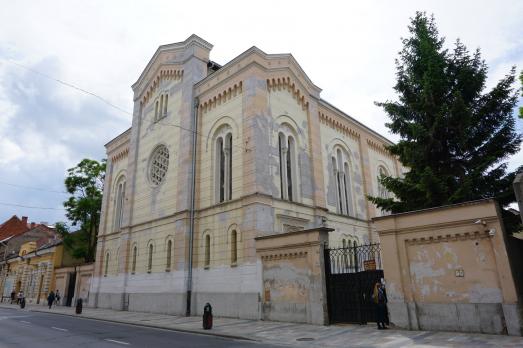
Miskolc, HU
The synagogue in Miskolc, designed by Ludwig Förster in a combined Neo-Romanesque and Neo-Moorish style - a synthetic style invented by Förster and his circle and now called Romantic Historicism, was built in 1861-63. Currently, the synagogue is in use (2018).
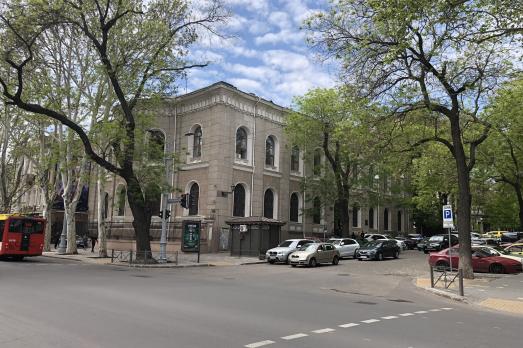
Odesa, UA
The Great (Glavnaia) Synagogue in Odessa in Kherson is an Ashkenazi synagogue built between 1847 and 1850 by architect Francesco Morandi (1811–1894). This Rundbogenstil brick building still serves as a synagogue.

Orla, PL
The synagogue in Orla was designed in the Baroque style in the middle of the 17th century with a building plan for nine bays and a vaulted ceiling. The synagogue has been rebuilt and remodeled many times. In the early 19th century, two wooden staircases were added to the women's gallery and the façade of the synagogue received a classical design. The wooden Torah ark, the murals on the eastern wall of the prayer hall, and its columns are original to the time of the construction of the synagogue. The murals on the eastern wall were connected to the wood and stucco ark and are partially preserved. The decoration theme includes peacocks and other birds, and garlands and grapevines. The murals in the arch above the entrance with 'the four animals' motif were painted in the 1920s.
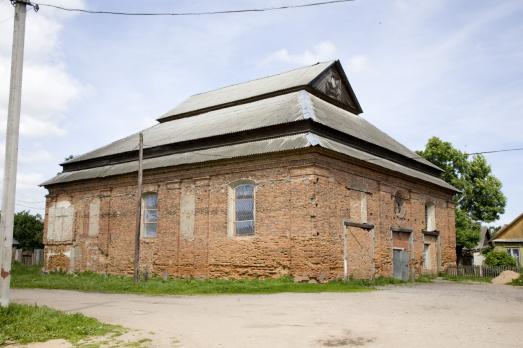
Ašmiany, BY
The synagogue may have been built in the mid-19th century, in the Neo-Classicist style. Its brick walls are decorated with pilasters that echo the pilasters in the prayer hall (both have corner pilasters and coupled pilasters in the center of the walls). The placement of pilasters in the interior allows us to assume that the vaults initially rested upon a bimah support situated in the center of the prayer hall. The main entrance to the synagogue is situated in the western façade. The women's section is on the upper floor of the western volume above the vestibule. Its entrance was by a wooden staircase attached to the southern façade (not preserved). The Hebrew newspaper Hamelitz (No. 179, 12[25].8.1902, p. 2-3) stated that the synagogue was re-inaugurated in August 1902, and that the repair was undertaken by the gabbai (warden) of the synagogue, Horovitz. It stands to reason that the repair included the demolition of the original vaults, bimah, and the construction of a new wooden dome on the interior and a new roof. It seems also that the original windows of the prayer hall were enlarged and a round window above the Torah ark was inserted (or remodeled). The women's section was connected to the prayer hall through five large arches. The western gable of the new roof was decorated by two wooden figures of lions (the southern lion is still preserved). Judging from the style of paintings of the interior dome and of the Zodiac signs, it is probable that another renovation was undertaken in the 1920s before the measured drawings of 1929 were prepared. After WWII, the building was transformed into a storage facility. Some of the windows and the arcade of the women’s section were bricked up and a wooden gallery was erected in the prayer hall. Three wide gateways were made on the eastern wall and later bricked up as well.

Otaci, MD
The Great Synagogue in Otaci is an Ashkenazi synagogue dating from the mid-19th century. This Historicist brick building is now abandoned.
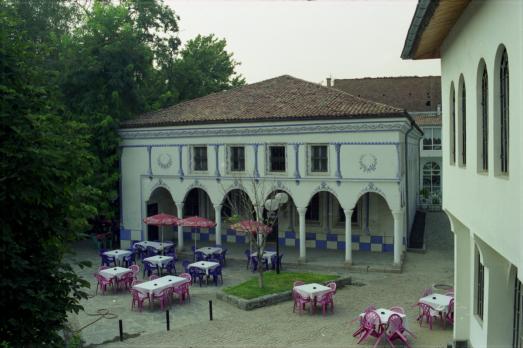
Pazardzhik, BG
The Great Synagogue in Pazardzhik is a Sephardi synagogue built between 1850 and 1859 by the master builder Stavri Temelkov. The synagogue was restored in 1988-89. The stone building served as a synagogue until the 1940s and is now a museum.
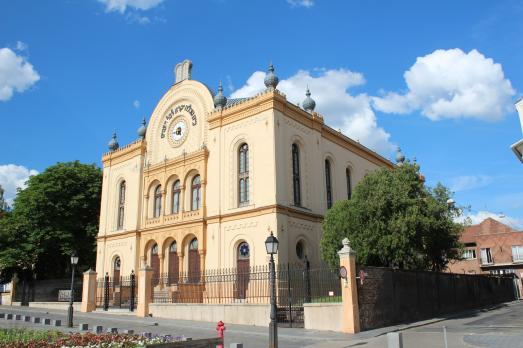
Pécs, HU
The synagogue is located in a large piazza, on the periphery of the historic urban core. Designed by Frigyes Feszl, Károly Gerster and Lipót Kauser, it was erected in 1869 for the newly established Neolog community. It is one of the large synagogues that combine Neo-Moorish and Neo-Romanesque features in their design. The synagogue was restored in the 1990s and serves the Jewish community of Pécs.

Piotrków Trybunalski, PL
The Great Synagogue in Piotrków Trybunalski is an Ashkenazi synagogue built in 1791-93. The synagogue was restored in the 1860s and after 1945. This Romantic Historicist brick building now serves as a library.
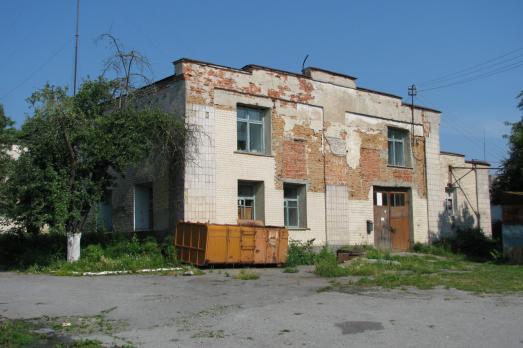
Polonne, UA
The Great Synagogue in Polonne is an Ashkenazi synagogue built around 1800. The former synagogue now serves as an office.

new
The Chassidic Route is a cultural and historical trail tracing the rich legacy of Jewish communities in southeastern Poland and western Ukraine. This region was central to the rise of Chassidism in the 18th century. Here, we highlight 10 remarkable synagogues you’ll discover along this route.

he cradle of the Industrial Revolution in Germany, Chemnitz, is well-known for its industrial heritage landscape, but the city is also home to remarkable examples of religious architecture from different historical periods. Join us as we explore the key landmarks of this European Capital of Culture 2025.

The twin towns of Nova Gorica (Slovenia) and Gorizia (Italy), lying on the border between the two countries, have a rich religious heritage, steeped in centuries of tradition. If you are looking for ideas for your visit, take note of these 10 religious sites that you should not miss.